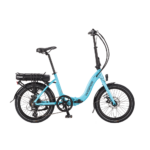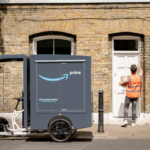I'm buying more r/c Lipo 
With Lipo the 80% rule really does increase pack life so a 20 Ah battery provides in reality about 15 Ah usable capacity. Discharge rate of 1C or 2C is well under the 10C available these things make the bike pull like a train on the hills!
For my longer range, on road use the disadvantages of Lipo are lesser than the advantages and as a bonus the packs are so cheap (when bought at sale prices) they are very economical even if they only last 300 or 400 cycles which in my case would be a couple of years. I calculated my pack amortisation for one year only, or 100, cycles, and even then I am at 0.03 € /km!!! With my public transport card it costs 0.06 € a km...
With Lipo the 80% rule really does increase pack life so a 20 Ah battery provides in reality about 15 Ah usable capacity. Discharge rate of 1C or 2C is well under the 10C available these things make the bike pull like a train on the hills!
For my longer range, on road use the disadvantages of Lipo are lesser than the advantages and as a bonus the packs are so cheap (when bought at sale prices) they are very economical even if they only last 300 or 400 cycles which in my case would be a couple of years. I calculated my pack amortisation for one year only, or 100, cycles, and even then I am at 0.03 € /km!!! With my public transport card it costs 0.06 € a km...







